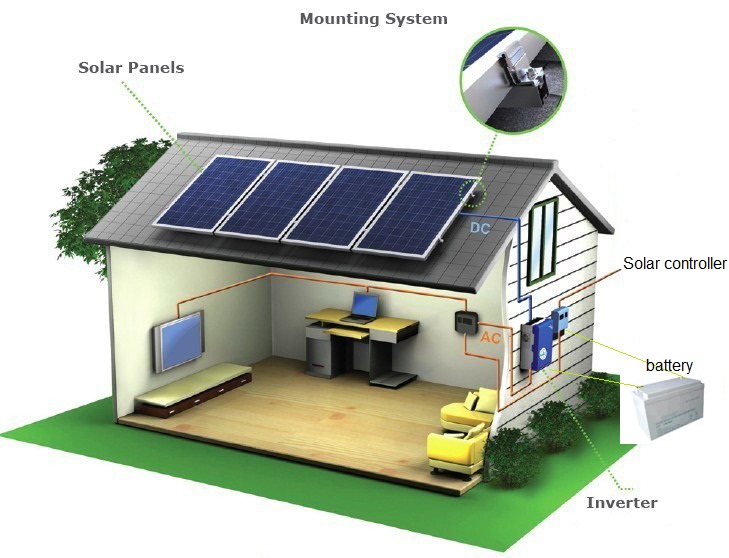
Solar Basics
From Sun to Fun
Solar energy is new and abundant every day. Understanding how to harness this power is essential to efficiently using this resource to its utmost.
Solar Components
All the parts you need to build your own custom solar solution.
Portable vs. Permanent
Taking your power with you? Or staying at home? We’ve got you covered with answers about what works best.
The ECO Store stocks supplies for your RV & Trailer solar system. We can help you with your DIY installation, or include a full-service solar installation service.
Click here to see our RV Solar page.
Want to have a solar system installed that will both be grid-tied and have a home battery backup? Our partner, Swell Energy, provides a full-service program to install a new system, or work with an existing system to get it up and running they way you want.
Begin with the basics...SOLAR PANELS
– Portable
– Flexible
– Rigid
– Ground, Pole, or Roof Mount
– 10W-420W
Roof Mount Panels
Roof mounted panels to power your home, garage or RV.
Ground Mount Panels
Place your solar panels in a secure, well-exposed location.
Pole Mount Panels
Place your panels above any obstructions such as buildings or trees for optimal exposure.
Flexible Panels
Flexible to 30 degrees, these panels are able to accomodate curved roofs of RVs, boats and more. Super light to reduce weight and ease transport.
Foldable Panels
Portable panels provide the option to move with you and with the sun to ensure optimal exposure through the day.
Charge Controllers
Protect your solar system from over/under charge using a charge controller. There are 2 fundamental types: PWM (Pulse Width Modulation) and MPPT (Maximum Power Point Tracking). Generally, the PWM is good for systems <200W; MPPT is best for larger scale systems.
Choose your charge controller based on the amount of solar input expected: panels linked in series (add voltages), panels linked in parallel (add amperage). Check the back of your panel to find the specs for your equipment.
EXAMPLE: 2 – 100W (18V, 6A) panels linked in parallel > 18V/12A input minimum.
2 – 100W (18V, 6A) panels linked in series > 36V/6A input minimum.
Oversize your charge controller – give yourself room for growth and surge.
Batteries - How you store power
Having your power available when the sun isn’t shining is fundamental to power freedom and flexibility.
Batteries provide the storage capacity necessary to keep you going. The size and type of system will determine the number and type of battery, as well as the battery configuration (12V/24V/36V/48V).
There are 4 main types of batteries:
Lead-acid: (think car battery), easy to find, known capacity, less expensive, but heavy, sensitive to heavy, routine use and can be damaged.
AGM (Absorbant Glass Mat): common and fairly easy to find, less expensive, can be stored in any orientation; but can only be used to 50% capacity and heavy.
Gel: Similar to an AGM, can be stored in any orientation, more resistent to higher temperatures, can be stored in any orientation; but harder to find and more expensive.
Lithium (Lithium-ion or Lithium Iron Phosphate LiFePO4): Best choice for longevity, 90% discharge capacity, difficult to damage with consistent use, very light weight; but most expensive, sensitive to temperatures at or below freezing.
Inverters...from sunlight to an outlet
Solar power is produced and stored in batteries as DC (Direct Current). Some appliances and RV accessories run on DC power. All things that run on electricity in your home…all the plugs…require AC (Alternating Current).
Inverters transform DC power to AC. Smaller inverters have plugs and USB ports. Large, complex inverters are able to connect to an AC power source, generator or both.
The size of the inverter will rely on what you need to power, most commonly from 300-5000W.




